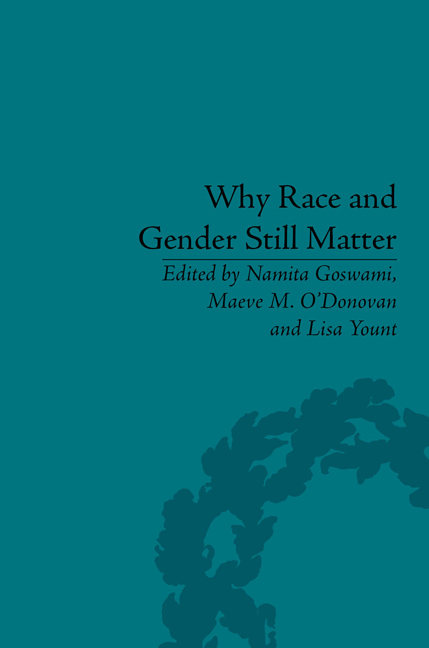Book contents
- Frontmatter
- CONTENTS
- Dedication
- Acknowledgements
- List of Contributors
- Introduction to Why Race and Gender Still Matter: An Intersectional Analysis
- Part I Defining Intersectionality
- 1 Race Women, Race Men and Early Expressions of Proto-Intersectionality, 1830s–1930s
- 2 Past as Prologue: Intersectional Analysis from the Nineteenth Century to the Twenty-First
- 3 Making Sense: The Multistability of Oppression and the Importance of Intersectionality
- 4 Reinvigorating Intersectionality as a Provisional Concept
- 5 ‘Big Red Sun Blues’: Intersectionality, Temporality and the Police Order of Identity Politics
- Part II Doing Intersectionality
- Notes
- Index
1 - Race Women, Race Men and Early Expressions of Proto-Intersectionality, 1830s–1930s
from Part I - Defining Intersectionality
- Frontmatter
- CONTENTS
- Dedication
- Acknowledgements
- List of Contributors
- Introduction to Why Race and Gender Still Matter: An Intersectional Analysis
- Part I Defining Intersectionality
- 1 Race Women, Race Men and Early Expressions of Proto-Intersectionality, 1830s–1930s
- 2 Past as Prologue: Intersectional Analysis from the Nineteenth Century to the Twenty-First
- 3 Making Sense: The Multistability of Oppression and the Importance of Intersectionality
- 4 Reinvigorating Intersectionality as a Provisional Concept
- 5 ‘Big Red Sun Blues’: Intersectionality, Temporality and the Police Order of Identity Politics
- Part II Doing Intersectionality
- Notes
- Index
Summary
Kimberlé Crenshaw is most frequently credited for providing the first explicit articulations of intersectionality, that is, naming intersectionality as a concept and theoretical framework. Consequently, many accounts of the history of this concept only go back to 1989 or 1991, the publication dates of her articles ‘Demarginalizing the Intersection of Race and Sex: A Black Feminist Critique of Antidiscrimination Doctrine, Feminist Theory and Antiracist Politics’ and ‘Mapping the Margins: Intersectionality, Identity Politics, and Violence against Women of Color’, respectively. But some scholars reach back further into history, tracing the concept to women of colour feminist activism and scholarship operating a few decades earlier. For example, in a genealogical essay on intersectionality, Patricia Hill Collins makes the case for tracing intersectionality back to the black feminist politics of the 1960s and1970s. She notes, ‘ironically, narratives of the emergence of intersectionality rarely include this period of social movement politics, and instead confine themselves to locating a point of origin when academics first noticed, named and legitimized this emerging field of study’.
Although this is an assessment with which I agree, I think that we can go back even further than the 1960s and 1970s to unpack the ‘knowledge project that was honed within social movements’ now more commonly referred to as intersectionality.
- Type
- Chapter
- Information
- Why Race and Gender Still MatterAn Intersectional Approach, pp. 13 - 26Publisher: Pickering & ChattoFirst published in: 2014



